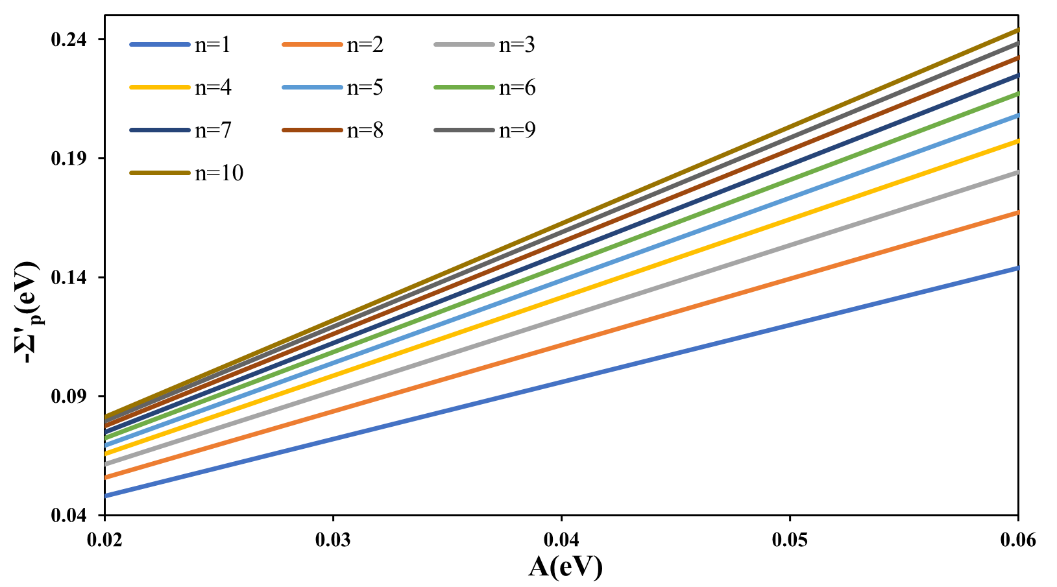Impact of Electron-Phonon Coupling on Graphene Intercalation Compounds from Self Energy: Polynomial Models Selection
DOI:
https://doi.org/10.48048/tis.2024.7907Keywords:
Conventional superconductor, ARPES, Eliashberg theory, Graphene intercalation compoundsAbstract
In our pursuit of understanding electron-phonon coupling (EPC) and their impact on material properties, we delved deep into the intricate role played by the Eliashberg function in governing electron self-energy. Through meticulous evaluation of tailored polynomial models approximating this function, we unearthed profound insights into how phonon interactions intricately modify electronic energy bands. Employing numerical computations, we meticulously unraveled both the real and imaginary aspects of electron self-energy, crucial in comprehending EPC effects in various materials. Investigating superconductivity within monolayer graphene and its interaction with diverse doping substances, our study led us to identify optimal polynomial models that accurately capture EPC behaviors, offering invaluable implications for predicting critical temperatures in superconducting materials. Expanding the parameters within our models allowed us to anticipate changes in self-energy models for higher-order configurations not explored in this study. Our selection of polynomial spanning degrees from n = 1 to 10 the efficacy of n = 2 (Debye) as the most realistic and accurate model, closely followed by n = 1, albeit occasional deviations observed in specific materials. These discrepancies often stemmed from noise model inaccuracies and parameter approximations. Our comprehensive approach outshone the traditional Kramer-Kronig transform in assessing electron-phonon interactions. Looking ahead, the application of multiple models to the Eliashberg function diagram holds immense promise for enhancing accuracy, despite the challenge of concurrently adjusting multiple input parameters. This integration of numerical modeling with experimental data forms a robust framework, empowering the prediction and fine-tuning of material properties vital for the future fabrication of devices.
HIGHLIGHTS
- Exploring the use of polynomial models to approximate the Eliashberg function, enabling a detailed analysis of electron-phonon coupling (EPC) in materials.
- Confirm the Debye model's accuracy in predicting the electronic structure of doped graphene.
- The findings suggest enhanced EPC in materials like CaC6 and its potential to induce superconductivity in monolayer graphene.
- This work offers a framework for future research and applications in superconducting materials using ARPES data.
GRAPHICAL ABSTRACT

Downloads
Metrics
References
BM Ludbrook. 2014, Electron-phonon mediated superconductivity probed by ARPES: From MgB2 to lithium-decorated graphene. Master Thesis. University of British Colombia, British Colombia, Canada.
AV Fedorov, NI Verbitskiy, D Haberer, C Struzzi, L Petaccia, D Usachov, OY Vilkov, DV Vyalikh, J Fink, M Knupfer, B Büchner and A Grüneis. Observation of a universal donor-dependent vibrational mode in graphene. Nat. Comm. 2014; 5, 3257.
TE Weller, M Ellerby, SS Saxena, RP Smith and NT Skipper. Superconductivity in the intercalated graphite compounds C6Yb and C6Ca. Nat. Phys. 2005; 1, 39-41.
H Zhang, C Bao, Ml Schuler, S Zhou, Q Li, L Luo, W Yao, Z Wang, TP Devereaux and S Zhou. Self-energy dynamics and the mode-specific phonon threshold effect in Kekule-ordered graphene. Natl. Sci. Rev. 2022; 9, nwab175.
CM Hao, X Li, AR Oganov, J Hou, S Ding, Y Ge, L Wang, X Dong, HT Wang, G Yang, XF Zhou and Y Tian. Superconductivity in graphite intercalation compounds with sodium. Phys. Rev. B 2023; 108, 214507.
N Emery, C Hérold, JF Marêché and P Lagrange. Synthesis and superconducting properties of CaC6. Sci. Tech. Adv. Mater. 2008; 9, 44102.
SL Yang, JA Sobota, CA Howard, CJ Pickard, M Hashimoto, DH Lu, SK Mo, PS Kirchmann and ZX Shen. Superconducting graphene sheets in CaC6 enabled by phonon-mediated interband interactions. Nat. Comm. 2014; 5, 3493.
F Marsiglio. Phonon self-energy effects in Migdal-Eliashberg theory, Available at: https://arxiv.org/abs/2101.12084, accessed October 2026.
P Hofmann, IY Sklyadneva, EDL Rienks and EV Chulkov. Electron-phonon coupling at surfaces and interfaces. New J. Phys. 2009; 11, 125005.
U Pinsook. In search for near-room-temperature superconducting critical temperature of metal superhydrides under high pressure: A review. J. Met. Mater. Miner. 2020; 30, 31-41.
AM Brown, R Sundararaman. Ab initio phonon coupling and optical response of hot electrons in plasmonic metals. Phys. Rev. B 2016; 94, 75120.
A Nojima, K Yamashita and B Hellsing. Model Eliashberg functions for surface states. Appl. Surf. Sci. 2008; 254, 7938-41.
F Schrodi, A Aperis and PM Oppeneer. Influence of phonon renormalization in eliashberg theory for superconductivity in two- and three-dimensional systems. Phys. Rev. B 2021; 103, 64511.
M Gao, ZY Lu and T Xiang. Prediction of phonon-mediated high-temperature superconductivity in Li3B4C2. Phys. Rev. B 2015; 91, 45132.
A Bostwick, T Ohta, T Seyller, K Horn and E Rotenberg. Experimental determination of the spectral function of graphene, Available at: https://arxiv.org/abs/cond-mat/0609660, accessed October 2026.

Downloads
Published
How to Cite
Issue
Section
License
Copyright (c) 2024 Walailak University

This work is licensed under a Creative Commons Attribution-NonCommercial-NoDerivatives 4.0 International License.






